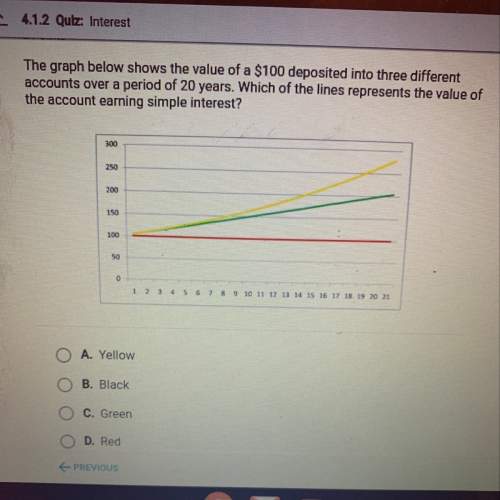
Mathematics, 14.09.2019 07:30 braines2003
You have a large jar that initially contains 30 red marbles and 20 blue marbles. we also have a large supply of extra marbles of each color. draw a marble out of the jar. if it's red, put it back in the jar, and add three red marbles to the jar from the supply of extras. if it's blue, put it back into the jar, and add five blue marbles to the jar from the supply of extras. do this two more times. now, pull a marble from the jar, at random. what's the probability that this last marble is red? what's the probability that we actually drew the same marble all four times?

Answers: 3


Other questions on the subject: Mathematics


Mathematics, 21.06.2019 15:30, chelseychew32
Question 7 of 47 1 point what is the equation of a line with a slope of 1/2 that passes through the point, (-2,5)? o a. 1/2x+3 o b. y=1/2x+5 o c. y=x+5 o d. y=1/2x+6
Answers: 3


Mathematics, 21.06.2019 21:00, palomaresmitchelle
Which expression is equal to (21)(7)(3x) using the associative property? (21 · 7 · 3)x (7)(21)(3x) 32(7 + 3x) (3x)(7)(21)
Answers: 2
You know the right answer?
You have a large jar that initially contains 30 red marbles and 20 blue marbles. we also have a larg...
Questions in other subjects:

Geography, 21.10.2021 15:30


Biology, 21.10.2021 15:40

History, 21.10.2021 15:40




Social Studies, 21.10.2021 15:40

Mathematics, 21.10.2021 15:40

Chemistry, 21.10.2021 15:40


 is the probability that we go R - R - R - R
is the probability that we go R - R - R - R .
.

 . So
. So
 is the probability that we go R - R - B - R
is the probability that we go R - R - B - R
 is the probability that we go R - B - R - R
is the probability that we go R - B - R - R
 is the probability that we go R - B - B - R
is the probability that we go R - B - B - R
 is the probability that we go B - R - R - R
is the probability that we go B - R - R - R
 is the probability that we go B - R - B - R
is the probability that we go B - R - B - R
 is the probability that we go B - B - R - R
is the probability that we go B - B - R - R
 is the probability that we go B - B - B - R
is the probability that we go B - B - B - R








